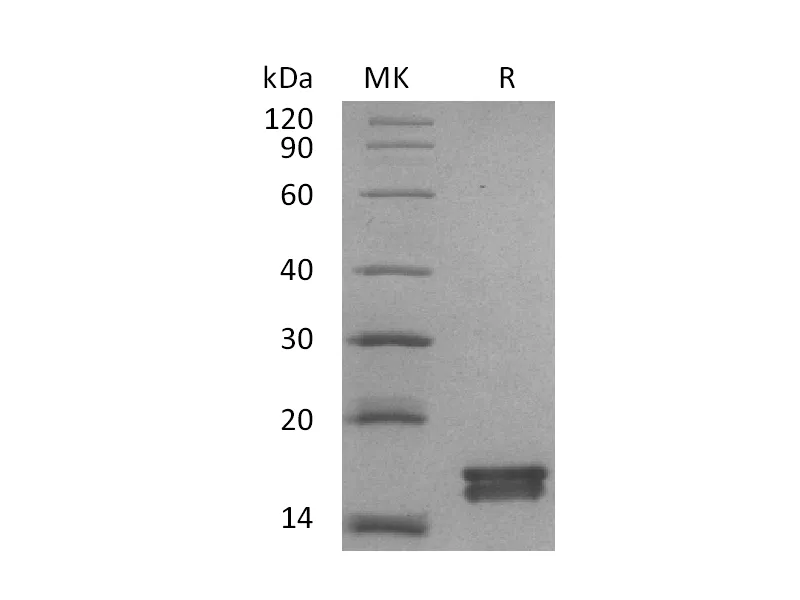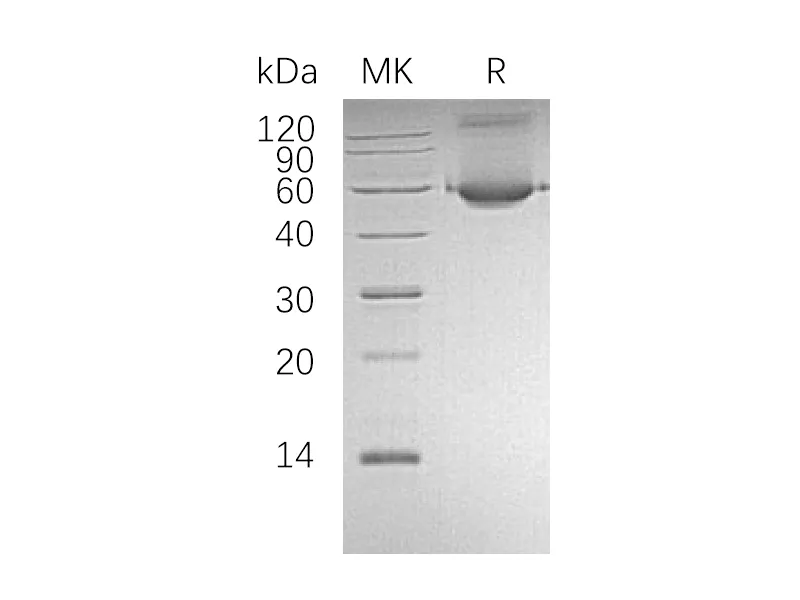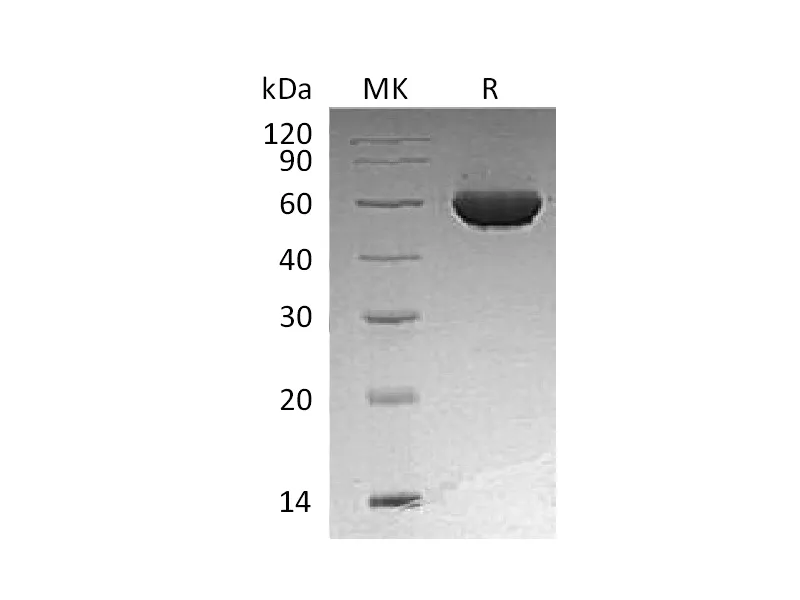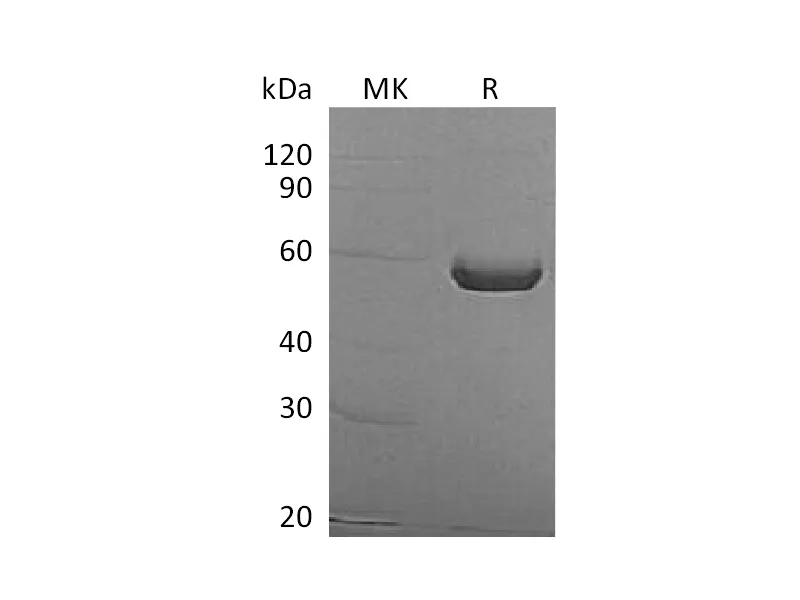Alternative Names
Ephrin-B2; ELF-2; EPH-related receptor tyrosine kinase ligand 5; HTK ligand; Elf2; Epl5; Eplg5; Htkl; Lerk5.
Background
Ephrin-B2 is a single-pass type I membrane protein and it contains 1 ephrin RBD (ephrin receptor-binding) domain. Ephrin-B2 belongs to the ephrin (EPH) family and it is cell surface transmembrane ligand for Eph receptors, a family of receptor tyrosine kinases which are crucial for migration, repulsion and adhesion during neuronal, vascular and epithelial development. The ephrins and EPH-related receptors contain the largest subfamily of receptor protein-tyrosine kinases and have been associated with mediating developmental events, particularly in the nervous system and in erythropoiesis. Based upon their structures and sequence relationships, ephrins are allocated into the ephrin-A (EFNA) class, which are anchored to the membrane by a glycosylphosphatidylinositol linkage, and the ephrin-B (EFNB) class, which are transmembrane proteins. It also binds to receptor tyrosine kinase including EPHA4, EPHA3 and EPHB4 and together with EPHB4 plays a central role in heart morphogenesis and angiogenesis through regulation of cell adhesion and cell migration.
Note
For Research Use Only , Not for Diagnostic Use.




